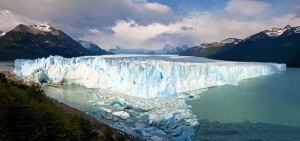There are few modern dangers as pressing and as polarizing a global warming. On the one side, you’ve got the alarmists who are predicting that a runaway greenhouse effect could render large portions of the earth uninhabitable within 50 years. On the other hand, there are climate change deniers who refute empirical scientific evidence and claim that the entire global warming scare is nothing more than a widely spread hoax. However, the reality of the situation is that yes, the earth is currently going through a period of global climate change, as it has done many times in the past. What has many people worried today is the abruptness with which the world climate is changing, and the possible connection this change has with human pollution trends. Here are a few facts about climate change, and some ideas on how humanity can do their part to slow its progression.
1. Arctic ice is decreasing at an alarming rate
People tend to get the impression that the ice sheets that surround the north pole are unchanging and eternal. However, this isn’t the case. The amount of ice on the poles fluctuates from year to year, sometimes decreasing, sometimes increasing. However, when viewed over the space of several decades,it becomes apparent that the overall amount of ice is decreasing year by year. This would indicate a trend towards higher temperatures worldwide.
2. Carbon Dioxide can be naturally absorbed and recycled by the environment, but humanity is producing CO2 faster than it can be broken down
The Antarctic Ocean is one of the most important CO2 recyclers in the world. In the past, it has been known to be capable of absorbing approximately 15% of the world’s CO2, which has been shown to act as a greenhouse gas and one of the major contributing factors to global warming. The other oceans recycle their fair-share of CO2 as well. When combined with other natural CO2 recyclers, the earth is able to absorb only about half of the CO2 produced by humanity. This leaves the the other half to simply stagnate in the atmosphere.
3. Average worldwide temperatures are increasing, and they are doing so at an increasing rate
Since 1880, the average world temperature has increased by 1.4 degrees fahrenheit. That may not sound like a whole lot, but when one also considers that the rate by which the temperatures are increasing, it becomes somewhat more alarming. The Intergovernmental Panel on Climate Change (IPCC) has reported that 11 of the last 12 years were in the top dozen warmest years on record since 1850. This means that temperature could continue to increase exponentially.
However, that doesn’t mean that nothing can be done. In order to stabilize global climate change, we’re going to have to learn to embrace clean, renewable alternate energy sources—and we need to do it soon. Many countries have already begun to use alternate energy, but the change needs to happen on a global scale. That means that everyone, from government organizations, to businesses, to individuals, are going to have to make lasting changes in the way that they operate. For starters, automobile use in developed nations needs to be reduced. Simply replacing conventional gasoline-powered cars with hybrids or fully electric automobiles does little to help the environment, considering the negative impact that the production of car batteries has on the environment, and the fact that the electricity used to power the cars is normally generated in coal-burning power plants (which are believed to be the primary cause of global warming in the first place).
At the same time, clean energy sources such solar power should be further investigated. Individuals can now work with existing home automation companies such as Vivint or Solar City to install simple solar panels on their homes to help cut back on personal reliance on unclean grid electricity.
Global climate change is happening, but things aren’t as badly off as some would have you believe. With some changes to our personal lifestyles, we can help slow the negative effects of global climate change, and develop new techniques to help keep our planet beautiful, productive, and as habitable as possible.

